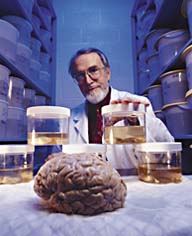I’m not a joiner by nature, but occasionally, I find a cause worth joining. One of these is the Mother Bear Community Action Network, or Mother Bear CAN. This network of not just mothers, by the way, is a grassroots response to the hijacking of mental health care by professional psychiatry and psychopharmacology. That’s my own spin on the work that this network does. The Network has an excellent resource section with a reading list that includes Robert Whitaker’s Anatomy of an Epidemic, Thomas Szasz’s The Myth of Mental Illness, and Peter Breggin’s book, Your Drug May be Your Problem. Please read some highlights from the site that I have reprinted below, and sign up to their newsletter for your regular dose of positive and empathetic knowledge about helping to navigate the recovery process for a family member.
highlight
Hope is real
by Larry Drain:
We are all much more than any label. A diagnosis is simply a word used to describe the distress you, a family member or friend may struggle with every day or perhaps only for a short while. Diagnoses can he helpful as a way of making meaning, but they can be harmful for the very same reason. We often give labels far too much power. We let them determine the course of our lives. We hold on to them even when they are no longer useful or true.
We are all much more than our distress. What we value, who and what we care about are central to our lives regardless of our struggles. Our hopes, dreams, strengths and talents say much more about us than whatever makes us a “patient.”
Human beings are resilient. Life is a constant process of change, adjustment and growth. Human beings are designed to face challenges and find new ways to adapt. We can learn to handle life’s challenges by meeting life in each moment. We can ask ourselves, what would be helpful in this moment? What is the next best step? When we get there, we ask again. And again. And again.
Over time we find that we have increased our capacity for change, and we are no longer so fearful of it. Change happens, so does recovery
highlight
At the Core of Mother Bear
Your family should not face a mental health challenge alone. When families come together to support each other, we tap into our instinctual protective and loving power to make mental health care choices that restore hope and promote real and lasting recovery.
Our Mother Bear CAN families embrace the following recovery values:
• Recovery is not only possible; it is expected.
• Emotional distress has many causes and many possible solutions.
• All family members deserve support and education for their own emotional distress.
• Individual and family empowerment are essential for recovery.
• Families, with honest education and support, can play a powerful role in recovery.
• The role and decision to use medication should be carefully considered including documented studies of risks.
• Recovery is a universal human experience that requires patience, hope and encouragement.
highlight
Mother Bear CAN Advisory Committee
Our advisory committee is composed of a diverse group of family members and individuals with lived experience, mental health reform advocates, recovery movement leaders, peer support counselors, recovery and peer-led organization leaders, family recovery education specialists, philanthropists, scientists, and recovery-oriented providers including psychiatrists, psychologists and counselors.
We are grateful to have the support and guidance of many wise bears including those affiliated with
• Center for Psychiatric Rehabilitation at Boston University
• Center for the Study of Empathic Therapy, Education & Living
• CooperRiis Healing Community
• Foundation for Excellence in Mental Health Care
• Icarus Project
• International Network of Integrative Mental Health
• International Society for Ethical Psychology and Psychiatry
• Family Outreach and Response Program
• MindFreedom International
• National Empowerment Center
• Utah Youth Village
Mother Bear CAN actively seeks partnerships with recovery- and family-oriented organizations that share our vision of helping families recover and thrive—emotionally, physically and socially.


